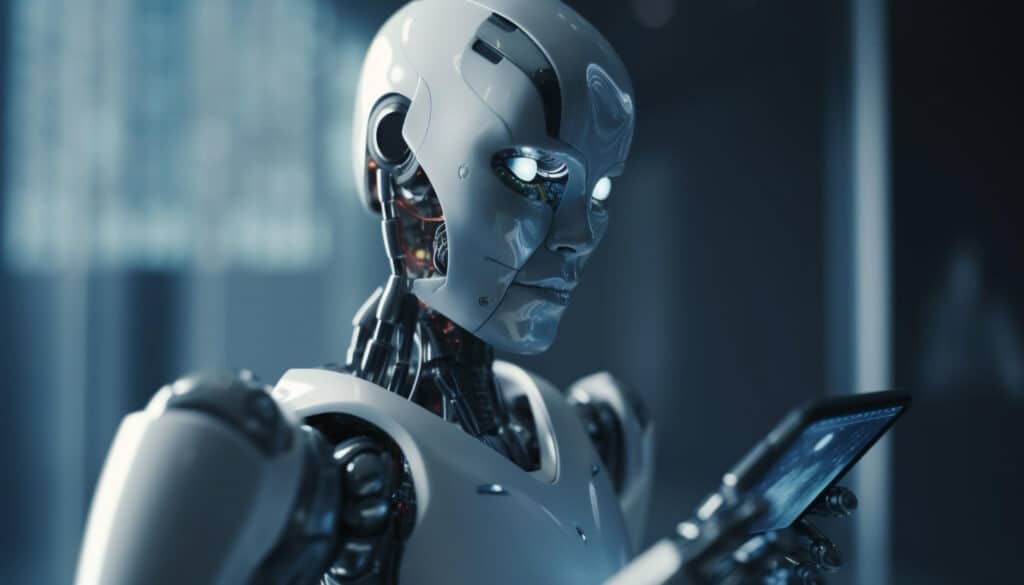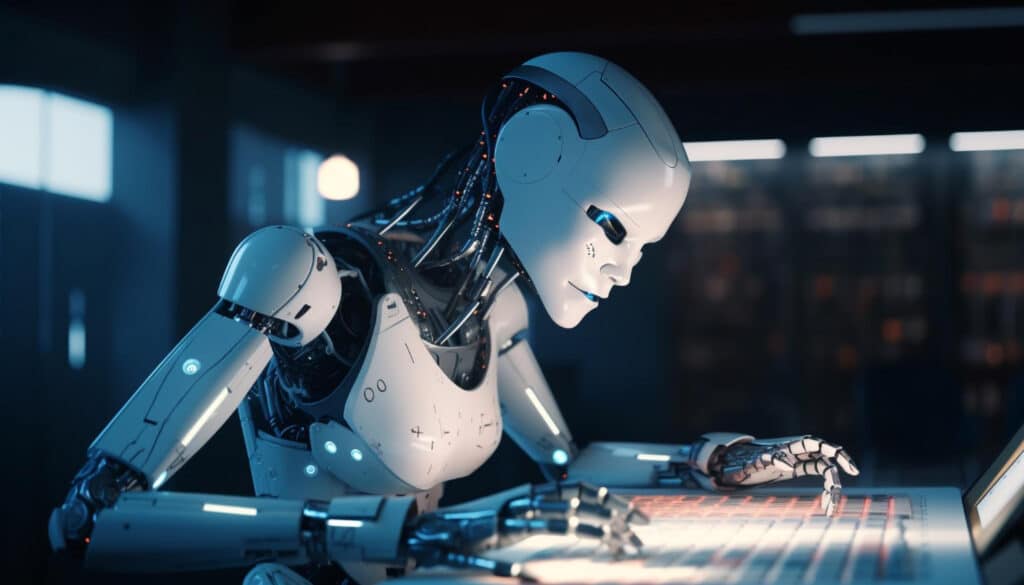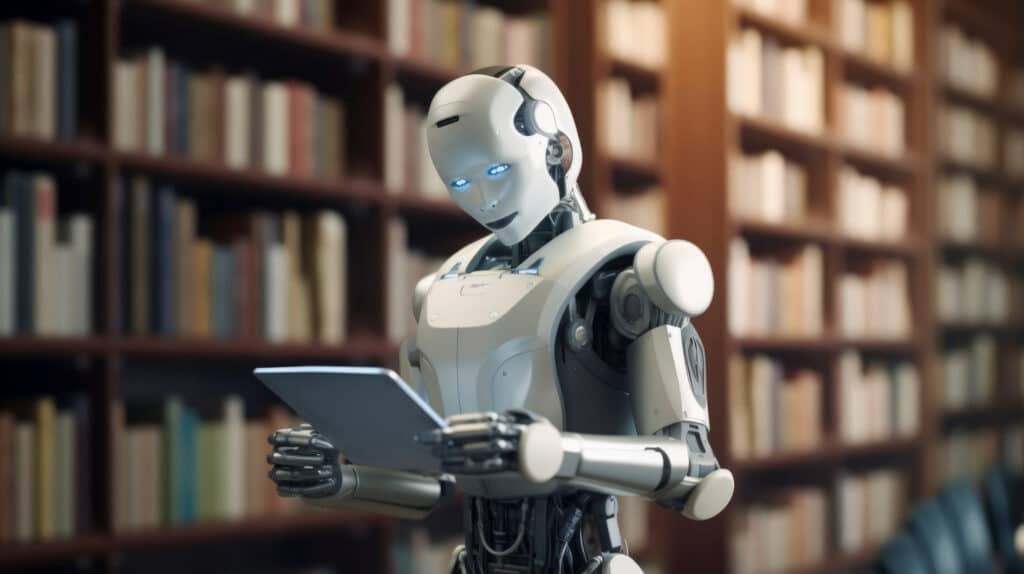Humanoid Robotics: A Beginner’s Guide

Have you ever come across a humanoid robot and thought about how it works or what its purpose is? Humanoid robotics are designed to resemble humans in their appearance and behavior, and they have been the subject of fascination for many years. In this blog, we will explore the world of humanoid robotics and provide a beginner’s guide to understanding these fascinating machines. We will cover everything from what defines a humanoid robot to significant robots that exist today, as well as their use in various fields. We will also delve into the underlying technology behind humanoid robots, including sensors, actuators, and planning and control mechanisms. Lastly, we’ll discuss future predictions for the field of humanoid robotics, including upcoming developments and potential challenges. So, let’s get started on our journey through the exciting world of humanoid robots!
Exploring the World of Humanoid Robots
Humanoid robots, with their resemblance to the human body and advanced capabilities, blur the line between science fiction and reality. These robots are equipped with sensors, artificial intelligence, and autonomous navigation abilities, allowing them to perform basic tasks and interact with humans in real time. Furthermore, they represent the new generation of robots capable of navigating tight spaces and using human tools. Their development has been driven by organizations, including Tesla, and professional service robots designed by companies like Amazon and Google. In December, CEO Elon Musk revealed significant progress in this field through the creation of Optimus, an advanced humanoid robot.
What Defines a Humanoid Robot?

A humanoid robot is characterized by its resemblance to the human body, including the ability to make eye contact and perform tasks such as autonomous navigation and using power tools. These robots are designed to be agile, mobile, and capable of human-like locomotion. Equipped with sensors and actuator systems, humanoid robots offer real-time automation. The market for humanoid robots is experiencing significant growth and research advancements.
The Fascinating Evolution of Humanoid Robotics
From the early days of humanoid robotics research, remarkable strides have been made in this field. Innovations driven by machine learning and artificial intelligence have been key factors in the development of humanoid robots. Notable research and development efforts at institutions like Osaka University and the University of Science and Technology of China have significantly contributed to the evolution of humanoid robotics. This has sparked widespread interest from tech giants, startups, and robotics enthusiasts worldwide, leading to advancements such as humanoid service robots for customer interaction and assistance.
Significant Humanoid Robots Today
From the innovative agility of Boston Dynamics’ Atlas to Agility Robotics’ real-world applications with Digit, humanoid robotics has seen significant advancements. 1X’s Neo displays cutting-edge locomotion and manipulation, while Sanctuary.AI’s Phoenix focuses on human-robot interaction. Additionally, Apptronik’s Apollo is designed for diverse research and real-world applications. These sophisticated robots are shaping the future of professional service robots, driving the field’s evolution. As humanoid robotics continues to progress, these creations stand as a testament to the relentless pursuit of technological advancement.
Atlas by Boston Dynamics
Atlas, developed through extensive robotics and artificial intelligence research at Boston Dynamics, boasts a humanoid form, advanced sensor systems, and autonomous navigation capabilities. The robot garnered widespread attention following its participation in the DARPA Robotics Challenge. Boston Dynamics continuously enhances Atlas’s capabilities, pushing the boundaries of humanoid robotics. The combination of AI and robotics has propelled the development of professional service robots like Atlas, further contributing to the evolution of humanoid robotics.
Digit by Agility Robotics

Digit by Agility Robotics represents a groundbreaking leap in bipedal robotic design, intended for tasks demanding human-like mobility and navigation. With capabilities tailored for real-world applications such as delivery and logistics, Digit’s development is influenced by exoskeleton and humanoid research. Agility Robotics envisions revolutionizing the presence of robots in everyday human environments through Digit, thus showcasing a pivotal shift in the field of professional service robots.
Neo by 1X
Representing a significant leap in practical humanoid robotics, Neo by 1X exhibits remarkable dexterity and adaptability through its advanced sensors and actuator systems. Designed to handle various tasks in diverse environments, Neo reflects the latest advancements in robotics and artificial intelligence. With professional service robots like Neo pushing the boundaries, the evolution of humanoid robots continues to gain momentum, as seen in the development of figures like Optimus, Nadine, and Sophia. The incorporation of such advanced technology showcases the ongoing progress in the field of humanoid robotics.
Phoenix by Sanctuary.AI
Sanctuary.AI’s Phoenix represents a groundbreaking approach to human-robot interaction and communication. Leveraging cutting-edge artificial intelligence and robotics, Phoenix exhibits remarkably natural behavior. Its form factor and capabilities allow for meaningful engagement with humans, reflecting the increasing interest in humanoid robots for social and service applications. The development of Phoenix signifies the convergence of robotics, AI, and human-centric design, positioning it at the forefront of professional service robots.
Apollo by Apptronik
Representing a significant contribution to robotics and automation, Apollo by Apptronik is a versatile and adaptable humanoid robot platform designed to address real-world challenges across industries. With its humanoid form and advanced control systems, Apollo excels in performing complex tasks with precision, making it a valuable asset for research and practical applications. Developed by Apptronik, this professional service robot offers a glimpse into the future of robotics and stands as a testament to the continuous advancements in the field.
Figure 01 by Figure.AI
Representing the seamless fusion of artificial intelligence and robotics in humanoid form, Figure 01, developed by Figure.AI, is meticulously tailored for human-centric tasks and interactions. It serves as a compelling showcase of the potential of humanoids in professional service and customer engagement, reflecting the ongoing evolution of humanoid robotics for real-world use. With its form factor, agility, and human-like features, Figure 01 stands as a testament to the remarkable advancements in robotics and artificial intelligence.
The Use of Humanoid Robots in Various Fields
Humanoid robots play pivotal roles across various sectors such as customer service, healthcare, and manufacturing. Their design facilitates the execution of basic functions and enables interaction with the environment akin to human engagement. These humanoids demonstrate autonomous navigation capabilities, along with real-time environmental interaction, reflecting their integration of advanced control systems and artificial intelligence. This alignment with AI and advanced technologies underlines their potential to revolutionize sectors through their human-like agility and adaptability, as seen in professional service robots like Figure 01 by Figure.AI.
Medical and Research Applications

With the increasing use of humanoid robots in medical and research applications, they are now actively involved in surgeries and patient care. Their ability to maneuver in tight spaces and use human tools has made them indispensable in these fields. Additionally, their agility and real-world mobility make them particularly suitable for various research and healthcare tasks. The integration of artificial intelligence and robotics in humanoid form, as seen in Figure 01 by Figure.AI, demonstrates the potential of humanoids in professional service and customer engagement.
Entertainment and Demonstrative Uses
Entertainment and demonstrative domains, such as theme parks and exhibitions, leverage humanoids to create immersive, interactive experiences. These robots engage with visitors in a lifelike manner, showcasing the advancements in robotics and captivating audiences. The lifelike interactions also highlight the potential of professional service robots in various settings, reinforcing the innovative possibilities that figure ai can unlock in the entertainment industry. From figure 01 by Figure.AI to the mesmerizing capabilities of Sophia, humanoid robotics continues to redefine entertainment and engagement.
Industrial and Commercial Uses
In commercial and industrial settings, humanoid robots play a crucial role in automating and powering tool operations. They are specifically designed to perform tasks that require interaction with human tools, effectively mimicking human body form factors. With their ability to contribute to efficient and precise operations, these robots significantly enhance productivity and the overall quality of work.
The Underlying Technology in Humanoid Robots
Humanoid robots integrate figure ai, tesla ceo elon musk, and professional service robots to achieve human-like functions. They leverage advanced sensors and actuators for real-world interactions and locomotion, as evidenced by the developments in robot technology by companies like Tesla and Amazon. The significant progress in this field is evident from the innovations reported by ieee spectrum and the contributions made by industry leaders such as CEO Brett Adcock. The continuous evolution of humanoid robotics is shaping the future landscape of professional service robots.
Sensor Types and Their Role
Enabling perception, environment sensing, and autonomous navigation, sensors in humanoid robots play a crucial role. They aid in real-time data acquisition, supporting decision-making and adaptive control. The use of sensor technologies is pivotal for ensuring safety and optimizing human-robot interaction, thus enhancing the overall functionality of humanoid robots.
Different Types of Actuators Used
Actuators, such as electric motors and pneumatic systems, enable motion and manipulation in humanoid robots. These actuators are designed for human-like agility, dexterity, and precision when performing tasks. The selection of actuators significantly influences the capabilities and form factor of humanoid robots, enhancing their efficiency and versatility. Incorporating advanced actuators, such as those used in professional service robots, ensures optimal performance and adaptability, paving the way for groundbreaking advancements in the field of humanoid robotics.
Planning and Control in Humanoid Robots
Humanoid robots employ machine learning and optimization algorithms to learn and adapt, while artificial intelligence plays a pivotal role in enabling them to execute complex tasks. Robotics experts Jonathan Hurst and Brett Adcock are at the forefront of humanoid research and advancement, driving innovation in this field. Their work has significant implications for the future of professional service robots, as humanoid robotics continues to progress rapidly.
How Do Humanoid Robots Learn and Adapt?
Humanoid robots learn and adapt through various methods like machine learning, reinforcement learning, and human guidance. The research community aims to achieve human-like learning and adaptability in these robots. AI techniques, including deep learning, play a crucial role in enhancing their learning and adaptation capabilities.
The Role of AI in Humanoid Robotics
The advancement of humanoid robotics heavily relies on the integration of AI, which enables various crucial functionalities such as perception, decision-making, and real-time task execution. Notable robotics and AI experts like Geordie Rose and Jerry Pratt significantly contribute to the continuous progress of this field. AI’s role extends to facilitating autonomous navigation, human-robot interaction, and adaptive control, ultimately shaping the evolution of professional service robots. These developments have opened up exciting possibilities in various industries, with implications that extend beyond physical attributes to include cognitive abilities.
Future Predictions for Humanoid Robots

The future outlook for humanoid robots encompasses advanced machine learning abilities, potentially transforming customer service and automation. Envisioned as capable of autonomous navigation and real-time decision-making, humanoids are expected to engage in basic tasks and real-world interactions with humans. The market for humanoid robots is projected to experience substantial growth in the upcoming years. These predictions align with the anticipated evolution of professional service robots. As forecasted by experts and industry leaders, humanoid robotics is positioned to revolutionize various sectors, shaping the future of AI and robotics.
Upcoming Developments in the Field
The field of humanoid robotics is witnessing a surge in research and development, with a strong focus on enhancing agility and mobility. Innovations are geared towards achieving more human-like locomotion and eye contact, while also investing heavily in creating human tools and power tools for robots. Furthermore, the new generation of robots is being designed to efficiently operate in tight spaces and navigate real-world environments. Advanced sensors and actuators are also in development to enhance the form factor and functionality of humanoid robots, promising exciting upcoming developments in this field.
Potential Challenges and Ethical Considerations
The societal impact of humanoid robotics poses ethical and practical challenges, particularly in the job market. Autonomous decision-making by humanoid robots requires careful ethical consideration to prevent potential misuse and ensure the need for regulatory guidelines. Ethical dilemmas emerge from their application in various domains such as healthcare and customer service, necessitating a balance between technological advancement and ethical responsibility. Ongoing discussions about the implications of humanoid robots replacing human tasks highlight the importance of addressing these challenges proactively.
How Far Are We from Fully Autonomous Humanoid Robots?

The journey towards achieving fully autonomous humanoid robots involves the integration of artificial intelligence and robotics. Despite advancements, challenges still need to be addressed. Research and technological progress are key in developing humanoid robots capable of independent navigation and decision-making, considering the complexity of human body and environment interactions.
Conclusion
In conclusion, humanoid robots have come a long way in terms of advancement and capabilities. From their definition and evolution to their use in various fields, these robots have shown immense potential. The underlying technology, including sensors and actuators, plays a crucial role in their functioning. Planning and control mechanisms, along with the integration of AI, enable these robots to learn and adapt. While there are still challenges and ethical considerations to address, the future of humanoid robotics looks promising with upcoming developments on the horizon. We may soon witness the emergence of fully autonomous humanoid robots, revolutionizing industries and transforming the way we interact with machines. It’s an exciting time to be a part of this technological journey.
Deep Dive into Advanced Artificial Intelligence Technologies

